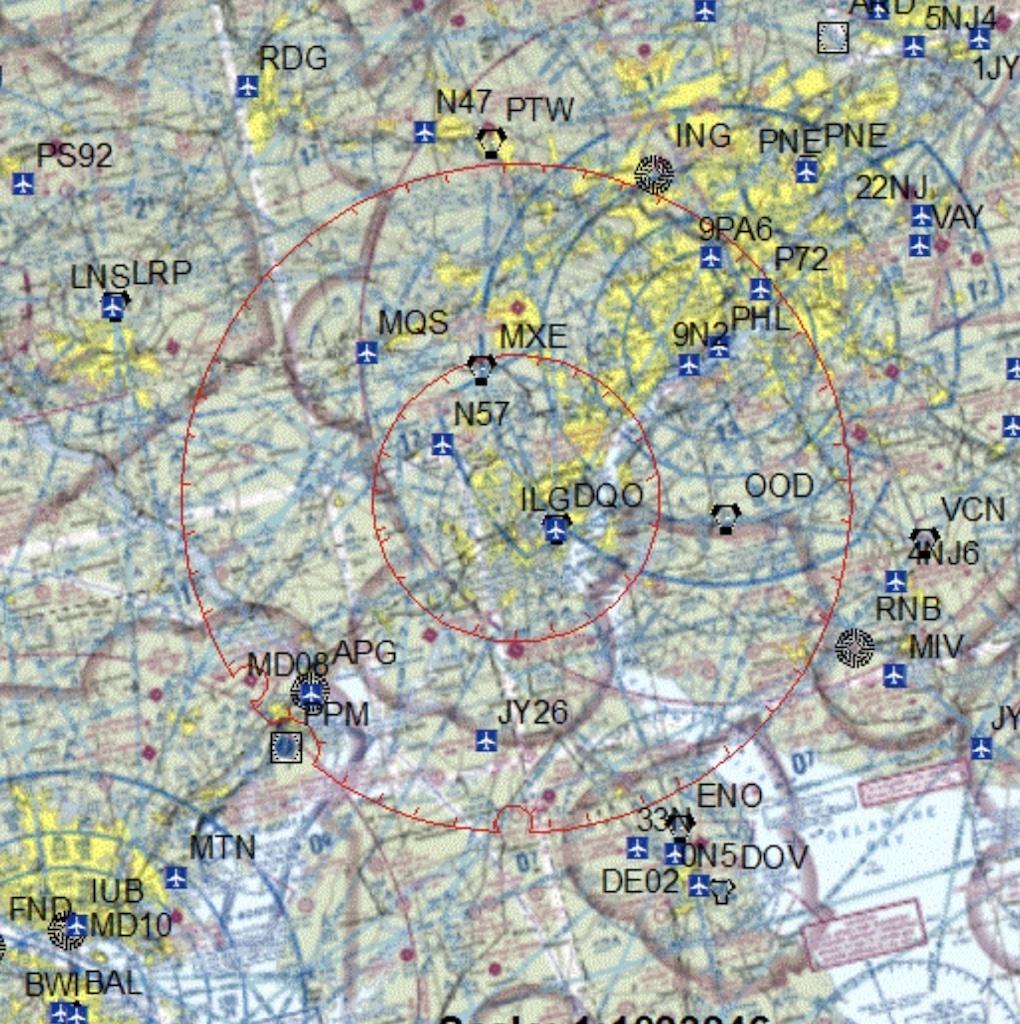
A TFR went into effect over Wilmington, Delaware “immediately” on August 2, 2024 at 2208 UTC and was scheduled to last until August 5 at 1730 UTC due to VIP movement.
The movements of the U.S. President and Vice President cause the initiation of Temporary Flight Restrictions (TFR) for national security reasons, and these TFRs can restrict the movement of air traffic. TFRs are also established to protect presidential and vice-presidential nominees during election season. Unfortunately, in view of recent grave events, the security of high officials has received increased scrutiny and attention.
Most presidential and VIP TFRs will be published 2-3 days prior to the event. However, sometimes the movements of top governmental leaders occur unexpectedly and result in the closure of an airport to non-scheduled aircraft. NASA Aviation Safety Reporting System (ASRS) submissions reveal how one of these suddenly announced TFRs resulted in multiple business aircraft experiencing unplanned diversions that resulted in a cascading series of difficult inflight decisions and constrained servicing of the aircraft once safely on the ramp at an alternative FBO.
Flights Diverted At Jackson Hole
An example of this occurred on a clear winter day at Wyoming's Jackson Hole Airport (JAC). A compilation of ASRS reports gives a clearer picture of the unexpected challenges to the flight crews involved. The smooth flow of air traffic was abruptly ended when Jackson Tower commanded: “Bizjet 123, Go Around. Contact Salt Lake Center.” That made no sense to the flight crew who had been over the landing threshold because the runway looked good with a dark black surface indicating that snow removal crews had done great work.
The Salt Lake Center controller informed everyone on the frequency that “Jackson is now closed to non-scheduled traffic.” This caught many of the flight crews by surprise. Due to the weather forecast, there was no requirement to have an alternate for an IFR flight plan. Thus, the submitters of these ASRS reports indicated they had the standard amount of fuel to get to the destination and then the mandatory 45-min. fuel reserve.
The FAA requires aircraft on an IFR flight plan to carry enough fuel to fly for an additional 45 minutes “at normal cruising speed.” The aircraft that had been on final approach to Jackson, however, had to execute a go-around and climb into the lower flight levels before proceeding toward an alternate airport. This consumed fuel at a rapid rate, thus leaving these aircraft with much less than 45 min. of cruising fuel.
When Salt Lake Center asked the flight crews to “state intentions,” the ASRS reports indicated the pilots were scrambling to find a suitable alternative. Most of the nearby airports are uncontrolled, with scant air field services—no weather reporting, sporadic snow removal and unknown runway conditions. The straight-line distance from JAC to Idaho Falls Regional Airport (IDA) is 58 nm and it was the nearest airport with definitive weather and runway condition reporting.
Flight crews were trying to get the NOTAMs and weather information for these unplanned alternates. They also needed to perform a Landing Performance Assessment based on the available information of the alternate airport’s wind and runway conditions. Unfortunately, the availability of that information was not easy to obtain while in the air. Furthermore, the main runway at IDA had a hard-packed snow surface, requiring flight crews to get into the landing performance charts for those conditions. Quickly, a large percentage of those business aircraft decided to divert to IDA.
The long line of aircraft waiting for landing clearance at IDA was sufficiently backed up due to the sudden convergence of aircraft diverting from JAC. Some of the flight crews were perilously close to their minimum fuel requirements. Soon the ATC frequency was filled with aircraft declaring “min fuel.”
There was a ripple effect on the ground. The ramp at the FBO was not sufficient for the mass influx of aircraft, nor was the FBO staffed for an extraordinary event. The sole fuel truck was able to fuel just one aircraft at a time. Aircrews had to scramble to obtain alternative catering, and their passengers who planned to be picked up in Jackson Hole had make the challenging drive to Idaho Falls, resulting in a multi-hour delay in the utilization of the aircraft and flight crews.
In Part 2 of this article, we describe the requirements that are imposed during temporary flight restrictions.





